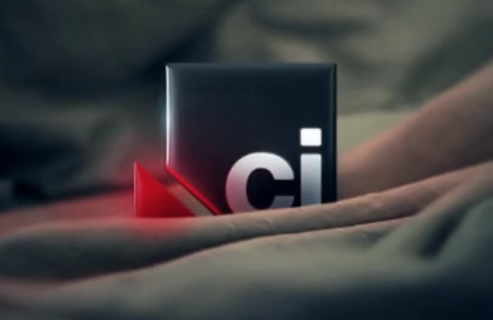From the cold, clinical opening chimes of the “Law & Order” theme to the disturbingly detached soul of “Dexter’s” lead character, TV tends to portray crime as a rather chilly subject – and for good reason. It’s hard to find warmth in a subject grounded in humanity’s worst impulses. And yet, somehow, a new rebrand of the Crime & Investigation Network does exactly that.
Designed by South African creative agency Monarchy, CI’s new look and feel is exemplified in a series of five idents that use eerily soft lighting and poetic storytelling to depict criminal themes. On the surface it seems like a drastic departure for a network fixated on true crime, but as Monarchy director and co-owner Delarey Hattingh told BRIEF, the goal was to create something that works much deeper than surface-level.
Through open-ended storytelling and imagery that departs from typical crime fare to suggest rather than explain, Monarchy created “something that you can watch 50 times over and not get bored with it,” said Hattingh. “It leaves it open for the viewer.” That openness is essential for a network that airs in more than 100 countries, in front of cultures ranging from Australian to Singaporean.
“It’s a universal truth no matter where you go,” said Hattingh. “People know bad things happen and they want to see justice being done.”
Using a narrative device Hattingh called “converged timelines,” Monarchy tapped into that far-flung craving by using fluid camerawork and editing to “show the victim, the criminal and the justice system in the same scene at the same time, almost in a continuous shot.” In an ident called “Bride,” for instance, we see the bride-to-be adjusting her veil in the mirror as another female figure lurks nearby. There is a grabbing, the veil falls to the floor, and then a photographer is shooting it for evidence. In less than 30 seconds, a lifetime of narrative is hinted at, with small details rewarding repeat viewings with even more intrigue. Why is the rival figure holding her own bouquet of flowers? Where is the blood or the body? Was this perhaps a kidnapping rather than a murder? The imagination runs wild with possibilities, which was exactly the point.
“This is a puzzle [viewers have] seen a million times, but we don’t want to answer everything,” said Hattingh. “You want [the audience] to participate. Otherwise, they’re just drones that watch what’s on-air.”
To that end, Monarchy, working with Crime & Investigation’s parent company A+E Networks, deliberately selected vague criminal themes for the idents over specific crimes. “Cult,” for example evokes the kind of mass suicides orchestrated by the likes of Heaven’s Gate without ever revealing how or why, while “Camper,” with its floating radio and spinning compass, could be referencing an alien abduction, a “Lost”-like otherworld, or something else from the supernatural realm entirely. Monarchy leaves it up to the viewer to decide.
Utilizing 4K cameras, Monarchy shot the footage for each ident at 240 frames-per-second, a slow-motion technique that produced macro photographic quality. The resulting effect is a level of physical detail so heightened it feels dream-like, adding to the aura of mystery latent in each narrative. While much of the footage was shot on location, Monarchy did also showcase its motion graphics skills in spots like “Spider,” where a vile-looking CG arachnid crawls across a bed spread toward its unassuming victim, and also to place a revamped CI logo at the end of each ident.
Given the clever placement of the CI logo in each ident, it comes as no surprise that Monarchy’s makeover of the logo came first in the rebranding process, and was the basis for all that followed. Elegantly conceived to begin with, CI’s logo features a square with one corner broken off, implying an array of crime-related implications. In line with its softening approach, Monarchy rounded the edges of the square, made it 3D, and added the brilliantly conceptual touch of a pulsating redness to the broken corner. As the closing shots of the five idents, the redness communicates blood, alarm, but also the reassuring presence of the authorities – in essence all of the maddening mixed emotions true crime is fraught with.
“The triangle speaks to so many things,” Hattingh said. “As soon as a crime happens, it breaks apart a person, it breaks the continuity of any whole person. That translates beautifully for us in bringing in that triangle for all our elements [of the rebrand]. You need that human touch. You need that realness out there, for what other network can use that real human touch better than Crime & Investigation?”
Tags:












































__twocolumncontent.jpg)










